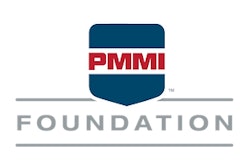In May 2008, Packaging World posted an online survey of four questions that drew nearly 700 participants. We follow last month’s cover feature (see packworld.com/article-25753) with a look at our second question: What is one important lesson you have learned about packaging materials?
Based on the number and quality of the responses, it’s apparent that material things really do matter, if not in the next world, then certainly in the packaging world. The responses were scattered around a range of subjects as wide as the packaging field itself. However, clear groupings emerged around a handful of key topics. In total, respondents offered up hundreds of solid opinions and insights that we are pleased to present as a source-reduced collection of highlights edited for clarity.
Perhaps to no one’s surprise, one of the major themes related to "the future is green," "it’s very important to go green," and similar comments regarding sustainability (see sidebar, Sustainable materials: tips and observations). The question struck a nerve with this manager from a pharmaceuticals company: "I appreciate all the developments in packaging materials that have helped medicines and food to reach from one corner of the world to the other. However, I feel that excessive use of packaging materials should be avoided. We can use packaging materials to preserve the food and medicines for longer shelf life and for bulk packs. There’s a need for us to review all our packaging materials and reduce per-capita consumption. Some 25 years ago, we were using much less packaging material, and yet we had fewer packaging-related problems. We should review our absolute requirements and take steps to promote multiple-use bulk packs at retail so that unit packaging will be reduced. We have started feeling the heat of global warming. The packaging industry can make a major contribution."
This following advice touches on sustainability, but is even broader than that: "Match the material properly to the use: Don’t select a material that has been engineered to last for decades for a use that is for days/weeks/months." Another response also advised to consider the appropriate time frame: "Think about long-term (5-10 years and longer) packaging materials and processes and how the current system will support your packaging in the future."
Consistency is crucial
There were a number of cautionary warnings about how inconsistent materials can be and how that can affect quality.
Consider these:
• All similar materials may not have the same performance. Always learn as much as possible about the material that it is going to be used on your packaging equipment.
• Not all materials from each supplier are the same (even if they claim it).
• Materials are much more inconsistent than the suppliers tell you—and they themselves believe.
• Packaging materials are all very different. It is important to stay current and in touch with your suppliers to ensure that the materials are consistent. If changes are made, you should understand how they affect the performance of your package.
• Materials can vary between suppliers even though they are supposed to be equivalent in thickness, stretch, etc.
• Never assume that materials are always the same. Materials change between lots and even within rolls.
To test is to know
The advice to know, test, and measure packaging materials was a popular theme running through dozens of responses. Wrote one respondent, "Sometimes seemingly insignificant properties can affect how a material can be processed on a machine—we need to understand what properties are critical and what others are not." "You get good material when you learn the characteristics of the material. Color, strength, density, tolerances, etc., could make your life miserable if you do not know what is going on," offered another.
Warnings about varying materials specifications were legion, such as this: "Packaging materials tend to vary in specification from the various manufacturing locations. It is important to follow the vendor guidelines in the storing and use of packaging material." Another packaging manager wrote this: "Looking at how the materials are handled prior to production is a key lesson."
A Nestlé manager offered this advice: "Buy consistently made material, the less variations the better, and tight specifications if possible. It may not mean you will spend more money, but if it does, less downtime and waste will pay for the extra costs in packaging materials." Another suggested a holistic approach: "Not enough thought is given to materials’ performance through the supply chain."
Associated with consistency of materials was a way to determine a materials’ consistency or lack thereof, and that’s through testing and measurement—a critical aspect, according to this respondent: "Test materials/containers through your entire supply chain—failures can often be hidden without it." "Trial all steps of the process prior to execution," wrote another. "This enables failures to be identified early on and corrected before it turns into a problematic issue."
Another comment underscored the importance of real-world testing of materials: "Test on-line, not in an office."
Then there’s the consideration of implementing the proper amount of testing, an aspect perhaps best captured by this respondent: "All materials have a range of measurable characteristics. You need to identify those that are critical to your operation and production system or product protection. Manage those tightly and less so the others."
And there was this spot-on caution: "Specifications in some instances can be rendered meaningless if controls/systems are not in place to ensure compliance with the specification." As another confirmed, "If you can’t measure it; you can’t control it!"
This comment pointed out the relationship between testing and true cost: "Establish clearly defined metrics and test. Do not take short cuts. Less expensive materials do not necessarily mean lower total cost."
Finally, there was this advice: "Test runs in the line and random checks on finished products in the market are musts before getting into a contract purchase of bulk material. Be sure all results are favorable."
This lesson comes courtesy of a Clorox packaging expert: "Always seek out alternative suppliers and qualify them early. As raw materials are the lifeblood of your product, things such as a strike, fire, or hurricane can cripple you without warning."
As in past surveys, there is always at least one example of contrasting advice. Noted one respondent: "Buying from a company that sells both packaging and the equipment to run it improves the accountability and effectiveness of the system." Now consider this contrasting viewpoint: "One-stop shop is not always the best avenue. Sometimes combining equipment and consumables is good upfront, but detrimental to the bottom line in the long run. Always make sure that the vendor is required to stay market competitive, even when combining these two items for the initial purchase."
Caveat emptor, as a packaging expert said many years ago.
A smorgasbord of good advice
Some advice was hard to categorize or was one-of-a-kind, which doesn’t make it any less useful:
• Temperature and moisture are major factors for packaging machinery to run smoothly to meet and exceed the flow rate. Remember, humidity isn’t your friend.
• Don’t fold flexible barrier materials.
• Preproduction runs cost less than mistakes in production.
• If you don’t qualify your vendors, you’ll never have peace.
• Everything affects the color. Plastics, paper, and processing/packaging methods can all make the same PMS shade look different.
• Each package has its own personality—the success of a project depends on knowing how to handle that personality.
The inner-most layer of film is critical for good sealing characteristics—work with a supplier that really knows its sealant web.
• You must inspect everything. Don’t assume that someone has inspected the product before you fill it.
• Nurture strong relationships with innovative material suppliers.
• Durability: How will the material look after the consumer has used it for six months and wants to repurchase?
• Equipment can be dramatically affected by the packaging materials. Determine material acceptance parameters and don’t blame the carton erector for warped flats or labelers for a nicked release liner.
• In every material is a hidden potential for cost saving or another advantage for the customer.
Another respondent wrote this sage advice: "Keep your mind open about the materials and packaging options that are available. Each and every package has its particular material that will work best for its purpose and application; have the patience to wade through all the options before jumping to a conclusion about what is best."
For those like me who prefer uplifting endings, and by that I mean optimistic and not naïve, we conclude with this encouraging advice: "This may not be exactly about packaging materials, but I’ve learned that it is important to always keep your foot in the learning ‘door.’ Don’t let yourself forget to check out magazines, other packages, and get first-hand experience, because by keeping your mind open to the new and ever-growing world of packaging technology, who knows what new success you can bring back to your company!"
Our Lessons Learned series continues next month with advice about packaging projects.



















